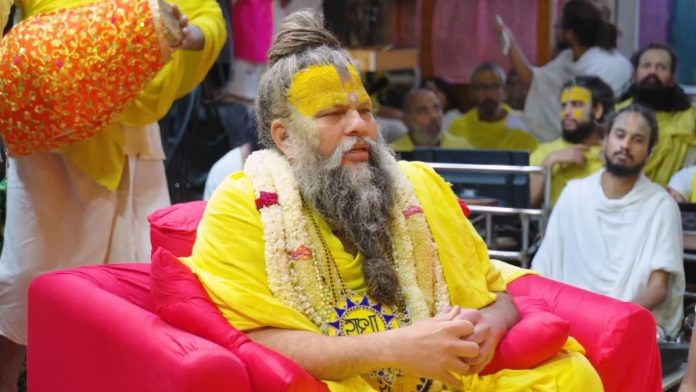Vrindavan: In the stillness of an intimate sabha, a handwritten question made its way to Premanand Maharaj — one that could stump even a high-stakes quiz contestant: “How do you spot a true saint?”
It was written by Poonam Ahuja, a follower seated quietly in the crowd. Reading it aloud, Maharaj smiled, looked straight at the people sitting in the room, and then answered without hesitation:
“You can’t. We don’t have the gyan netra. Anyone can dress like a saint and do terrible things. Some may see me as a fraud, some as an ordinary man, some as a decent soul — it all depends on you. There’s no fixed way to know.”
This kind of self–awareness is rare in India’s glut of babas, gurus, and godmen with huge empires, cult following, and often questionable advice. The crowd sat mantra-mugdh (spellbound) after hearing Premanand Maharaj’s answer — it appeared real, logical, and refreshingly free from religious jargon or scriptures.
In an age of filters and fake gurus, Premanand feels real. He doesn’t sell miracles, he tells you to sit with your pain — and chant
– Rohit Kumar, a devotee
More than a hundred women, men, and children had gathered at Shri Hit Radha Keli Kunj ashram in Vrindavan.
His popularity stems not just from his soft-spoken sermons, but also from his positioning as a ‘progressive baba’ — one who supports love and inter-caste marriages, gives logical, non-ritualistic advice, and recommends only naam jaap (meditation) as a solution. He denounces meat and alcohol, but stops short of prescribing poojas or offerings.
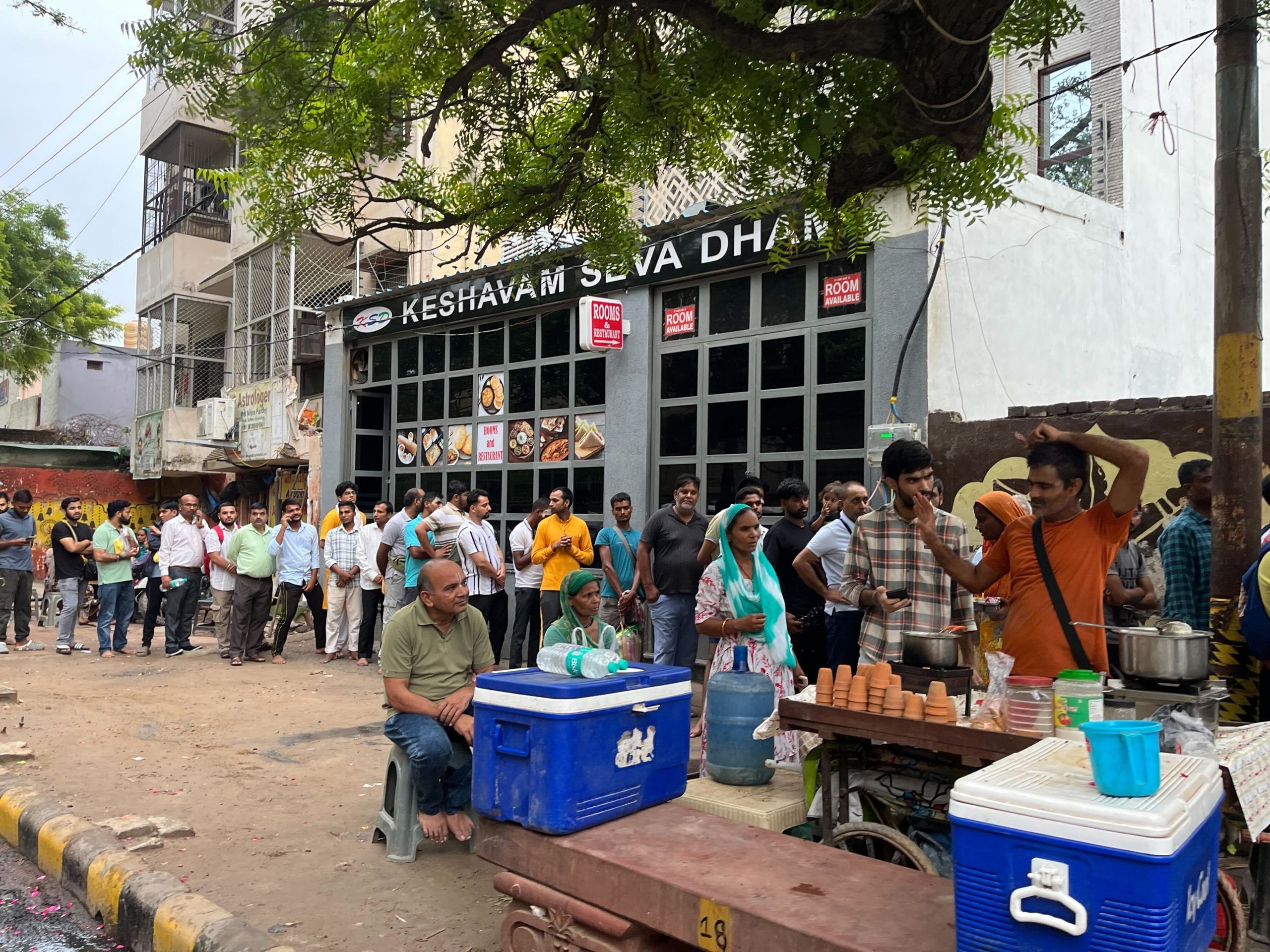
“That is the beauty of Premanand Maharaj ji. He doesn’t advertise religion, he brings peace to people,” said Vikram Singh, who, along with other followers, attended an Ekantik Vartalaap, or session, with Premanand Maharaj at his ashram in Vrindavan.
Every decade in India sees the rise of a spiritual figure who reflects the mood of the nation. In today’s landscape of godmen, Premanand Maharaj has quietly emerged as the baba for the digital age — viral across Instagram reels, YouTube Shorts, and WhatsApp forwards.
India has seen many babas — some who changed political equations, others who mobilised mass protests — but Premanand Maharaj stands out. His sabhas have no VIP enclosures. Everyone, from Virat Kohli and Anushka Sharma to Hema Malini and Ashutosh Rana, sits on the same floor in the same room.
“He doesn’t talk about one particular religion, he talks about spirituality and sauhard. He’s not like others who talk of building a ‘Hindu village’,” said Rohit Kumar, a resident of Akola village in Agra. Just getting a token seemed like an impossible task for the 34-year-old who works at a gas agency earning Rs 25,000 a month. Initially, he was convinced that only the rich and those with connections could meet Premanand Maharaj.
“I was talking to a customer about Premanand Maharaj and expressed my desire to see him one day. He suggested I stand in the line and take the token, I thought I wouldn’t get it,” said Kumar, who lives with his wife and three daughters. He took time off from work, and rode to Vrindavan on his bike where he waited for three hours before finally getting a token for the next day.
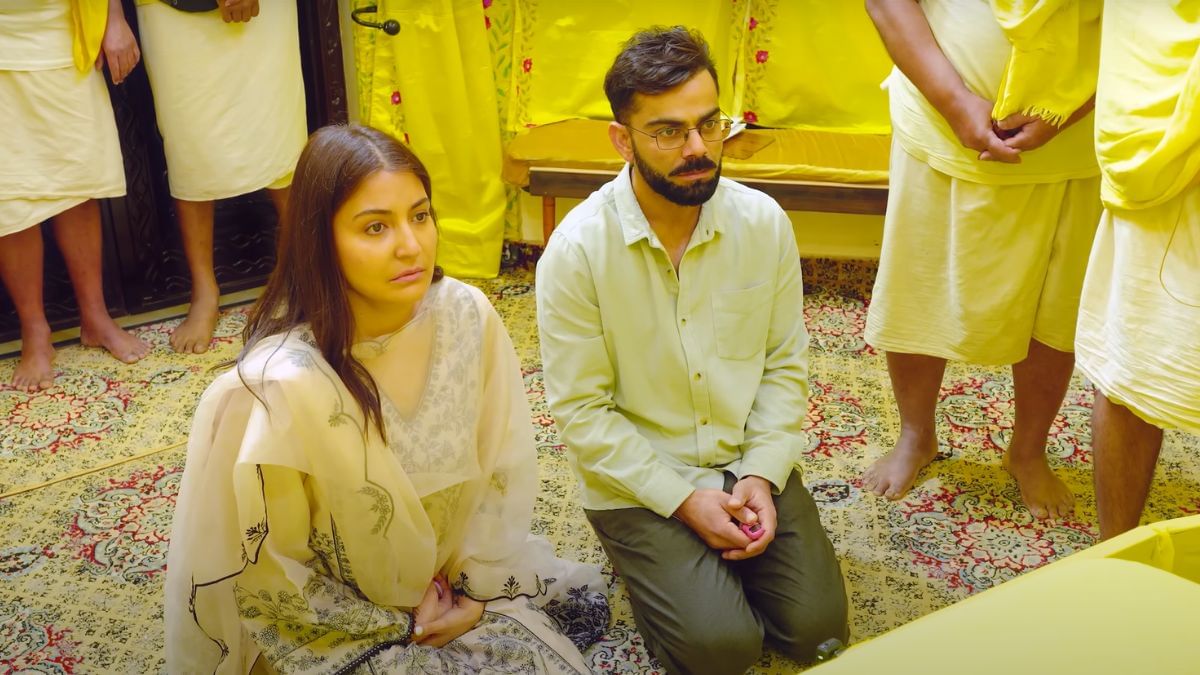
Premanand’s biggest followers are people in their 20s and 30s, even Gen-Z. A cult-like following is clearly forming — with daily darshan clips going viral, framed photos being sold in Vrindavan, and online merchandise piggybacking on his pravachans.
“In an age of filters and fake gurus, Premanand feels real. He doesn’t sell miracles, he tells you to sit with your pain — and chant,” said Kumar.
Ekantik Vartalaap
Meeting Premanand isn’t simple. He has put in place a setup that works like a lottery system — devotees have to come to Vrindavan and stand in a queue for hours just to get a token for the next day. The guidelines are strict: no children allowed, the meeting may be cancelled if the Maharaj falls ill, and the token, clearly marked as free, doesn’t guarantee instant access. No phones. No reels. No private conversation with him.
Even after securing a token, the path to the godman involves four stops — almost like ascending through the passages of heaven.
“My brother works with Mathura police, so I asked him to get three tokens for us. It’s my first time here. I don’t want to ask anything — I just want to see Maharaj ji,” said Manoj Sharma, who came with his wife and sister-in-law for Ekantik Vartalaap at Keli Kunj.
At the entrance, guarded by around 20 men, including Premanand’s sevaks and police, only token-holders are allowed in. Slippers must be removed, and devotees walk about 20 metres to sit on the floor, where a TV plays Maharaj ji’s pravachan.
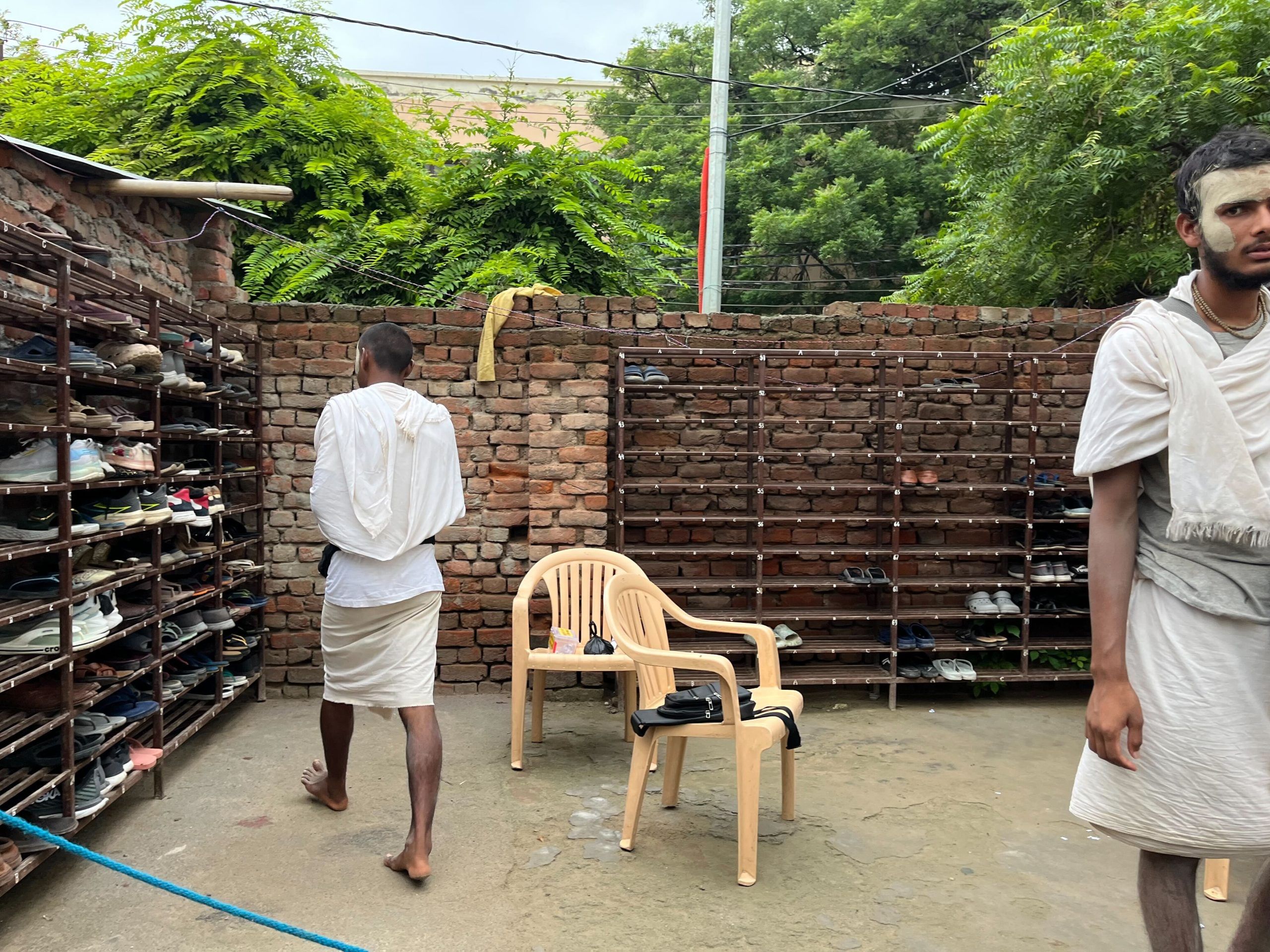
“Only an empty vessel can be filled,” he intoned from the TV screen. “Whenever you go to a saint, go with an empty mind — only then can your vessel be filled with gyan.”
Another devotee, Rupa Devi from Dadri, Haryana, listened intensely to the sermon. She wears a large photo of Premanand on a thick thread around her neck like a giant pendant. This locket-style photo has become a sartorial statement among his followers.
“My daughter had been after me for months to meet him. I stood in line for nearly three hours yesterday and finally got two tokens. I’ve received so much in life after listening to Maharaj ji,” said Rupa Devi, accompanied by her 19-year-old daughter who just passed Class 12 and is deeply devoted to Premanand.
“I hear Maharaj ji’s pravachan every day. I can’t imagine my life without him — only he can bring this generation to the right path,” said the young woman, before standing up to join other devotees at the gathering. She was dressed in a kurta and jeans with a streak of chandan on her forehead.
From the open area, devotees are called in batches into the ashram building — where around 60-70 people are seated at a time. A dhoti-clad sevak with a long black beard makes regular announcements.
“If you have questions, write them on a paper with your name. Do not speak to Maharaj ji when you enter.”
He read names off a list:
“Poonam Ahuja, Vikram Singh… please come forward. Separate lines for men and women.”
When he called out “Mohammad Asif”, heads turned toward a young man in his late 20s.
“It’s not surprising. Muslims, Sikhs, Jains — everyone comes to meet Maharaj ji,” another staff member told a curious devotee.
After two holding areas, the final waiting zone is upstairs — about 50 chairs arranged just outside Maharaj ji’s room. A sign on the wall requests people not to “pluck flowers or touch the branches” of the plants in the waiting area.
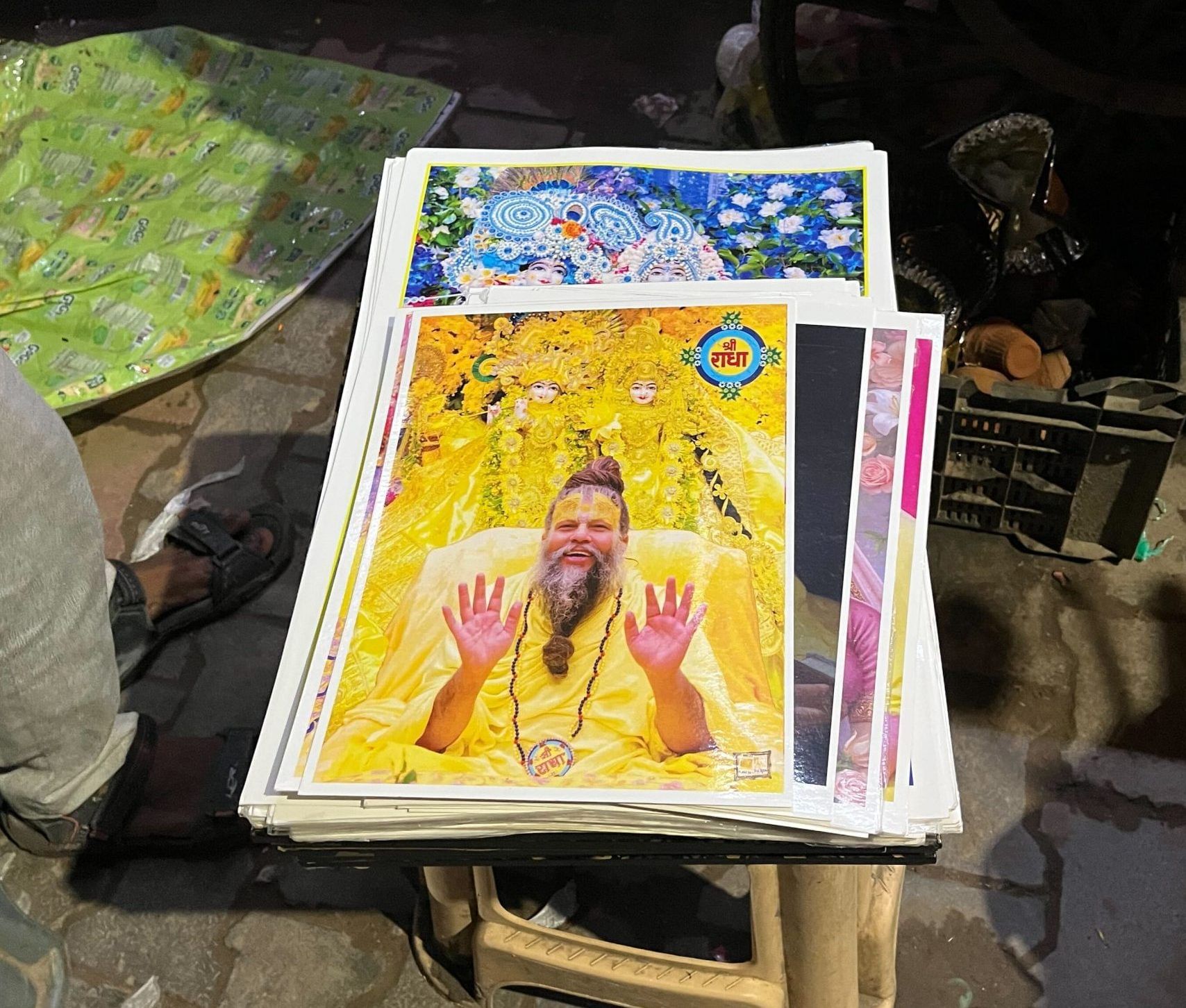
This is the last stop. Most of the devotees were not from Mathura. Like Kumar and Rupa Devi, they had come from Agra, Hathras, and Punjab. Wealthy women in their expensive salwar kameez and handbags rubbed shoulders with farmers and labourers. Some appeared put off that their money didn’t give them special treatment.
“We’ve been waiting over two hours. I can’t stand too long, but for Baba, I’ll do anything. There’s no shortcut,” said Seema Panchal, a school principal from Chandigarh.
As the door opened, everyone craned their necks to peek into the room. The space inside is a reimagined version of the Hindu god Krishna’s garden as seen in old miniature paintings and iconography — flower-adorned walls, intricately designed fountains,and floral rangolis on the floor. This faux garden room can hold 40 people. Masks are mandatory.
The centre of attention is Premanand, sitting on a gaddi, a yellow chadar draped over his upper body. Chandan (sandalwood) and Braj raj (soil from Vrindavan or Braj) adorn his forehead.
It’s like another small world of Premanand Maharaj ji that has a different kind of peace. I felt a different vibration after seeing baba. He answers everything honestly and if he doesn’t know anything he says it out loud
– a devotee
His long hair was tied into a bun at the crown of his head. Eyes closed, hands folded, he appeared deep in meditation. Every gaze was fixed on him.
The sabha began with chants of “Radha Radha Radha” for two minutes. No one is allowed to speak. Questions — submitted earlier — are read aloud by a sevak.
Five to six staff members manage the room. Two handle cameras, a third moderates the interaction. Two assistants sit beside the godman. One fans him with his hand, despite the two ACs and an electric fan whirring in the back.
“Maharaj ji you have some divine power, just after seeing you and listening to you brings so much peace in me. You are the one who can pull back this generation on the right track,” said a woman, her hands clasped. She was visibly overwhelmed after seeing him in person.
Premanand listened with a serene smile, nodding slowly, and folding his hands toward her with gratitude. But he didn’t utter a single word.
The godman’s inner sanctum has become more elaborate as he gained popularity and amassed followers. In older videos, the walls had a yellow laminate. Now, it has been replaced by a blue cotton lamination adorned with prints of green branches. Framed photos of eight sakhis (friends) of Radha hang on the walls including Vishakha and Lalita.
“It’s like another small world of Premanand Maharaj ji that has a different kind of peace. I felt a different vibration after seeing baba. He answers everything honestly and if he doesn’t know anything he says it out loud,” said another devotee at the sabha.
Another follower, Rekha Sharma, 38, travelled from Meerut with her teenage daughter. A school teacher, she first came across Premanand Maharaj’s video during the pandemic when her father was in the ICU with Covid.
“His words gave me strength,” she said, recalling how she began tuning into his videos on Youtube and Instagram. “Now I don’t make any big decisions without listening to him.”
Next to her was a wealthy business couple — Sunil and Poonam Verma — from Jaipur. They turned to the godman when Poonam was grappling with anxiety after retirement. Like other devotees, they praise the godman for giving them direction and guidance.
Each session lasts for 12-15 mins — every question does not make its way on the sabha. Roshni’s questions were not asked.
“I wrote 4-5 questions. They didn’t take any of it and said next time. I will have to go through the rigorous process of getting a token again, and sit for two hours for that. But the time spent there in the room with baba ji was worth it,” said Roshni while leaving the ashram.
Also read: A handwritten note, 2 signatures, only dead ends in Kashmir—Sarla Bhat murder is no easy case
Who is Premanand Maharaj?
Before becoming Premanand Maharaj, he was Aniruddh Kumar Pandey from a Brahmin family in Banaras. He claimed his father was also a sant.
And while other children were playing cricket or spending time with friends, a young Aniruddh turned his attention to deeper questions. He started contemplating whether a parent’s love was everlasting — and if it wasn’t, why should someone attach themselves to happiness that is temporary. Eventually, he realised that only god’s love is real and permanent, and everything else is temporary.
Following this line of thought, he left his home at the age of 13 to pursue sanyas.
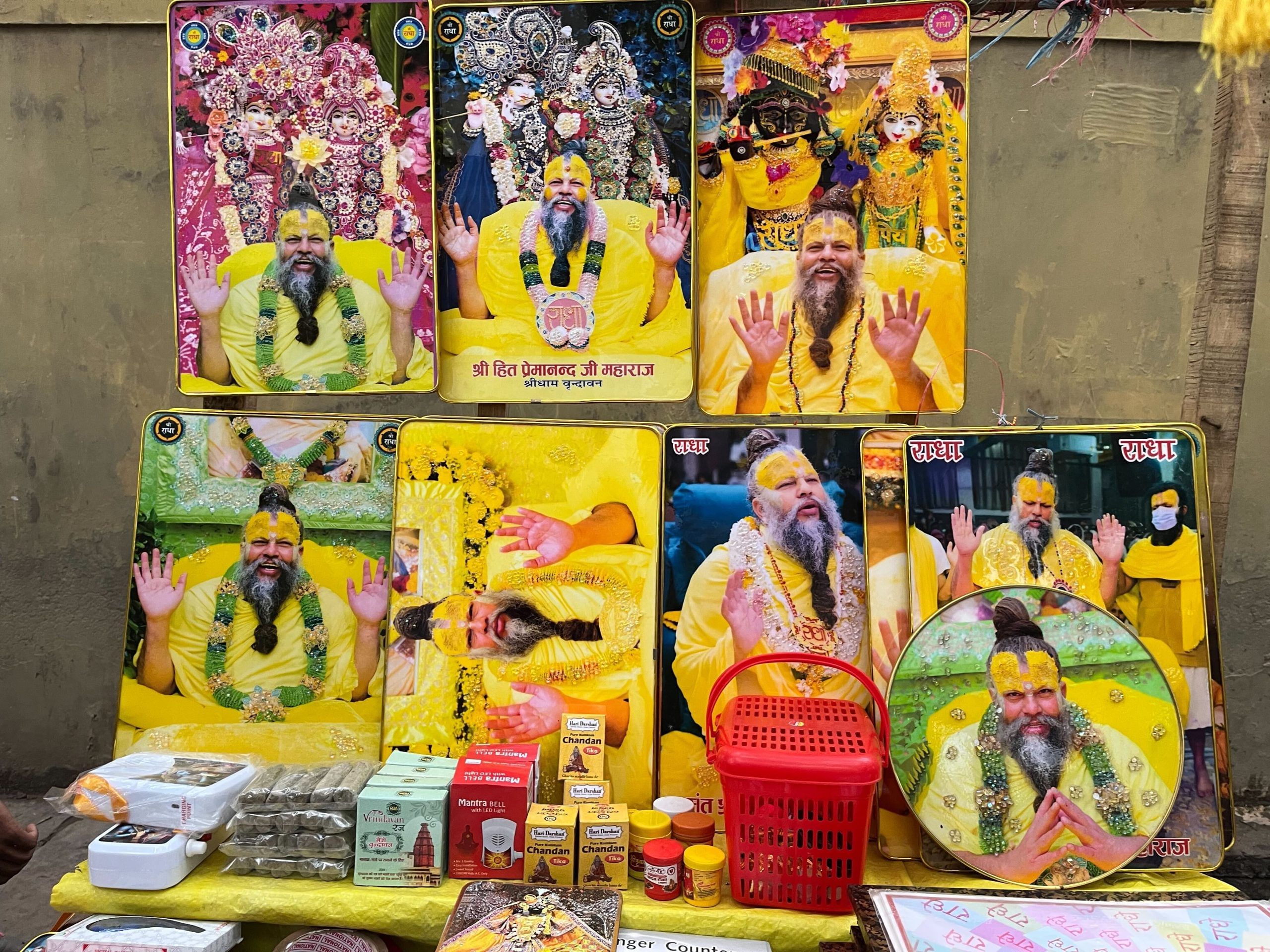
“I was born in a Brahmin family and did not have any facilities. I used to think that if my father and mother died, who would love me? Such questions kept coming to me. That is when I decided to leave home and spend my life as a sanyasi,” said Premanand, while speaking about his journey during an Ekantik Vartalaap.
After leaving home, he spent his initial years in Varanasi before moving to Mathura, where he became associated with the Radha Vallabh temple in Vrindavan.
“Maharaj ji’s early daily routine consisted of the Vrindavan parikrama and darshan of Shri Banke Bihari. He would stand for hours admiring Radha Vallabh ji. The respected goswamis (temple priests) noticed this,” said Anant Sharma, a resident of Vrindavan who knew him in those early days.
Two decades ago, when Pandey came to Vrindavan, he was one among thousands of other sants in the holy town — performing puja, chanting mantras, doing parikrama, and relying on bhiksha (alms) for food.
The days when nobody gave him food, he would go to the Sharma household where Anant’s wife, Lalita Devi, would cook for him. And even today, some of Premanand’s meals still come from her house.
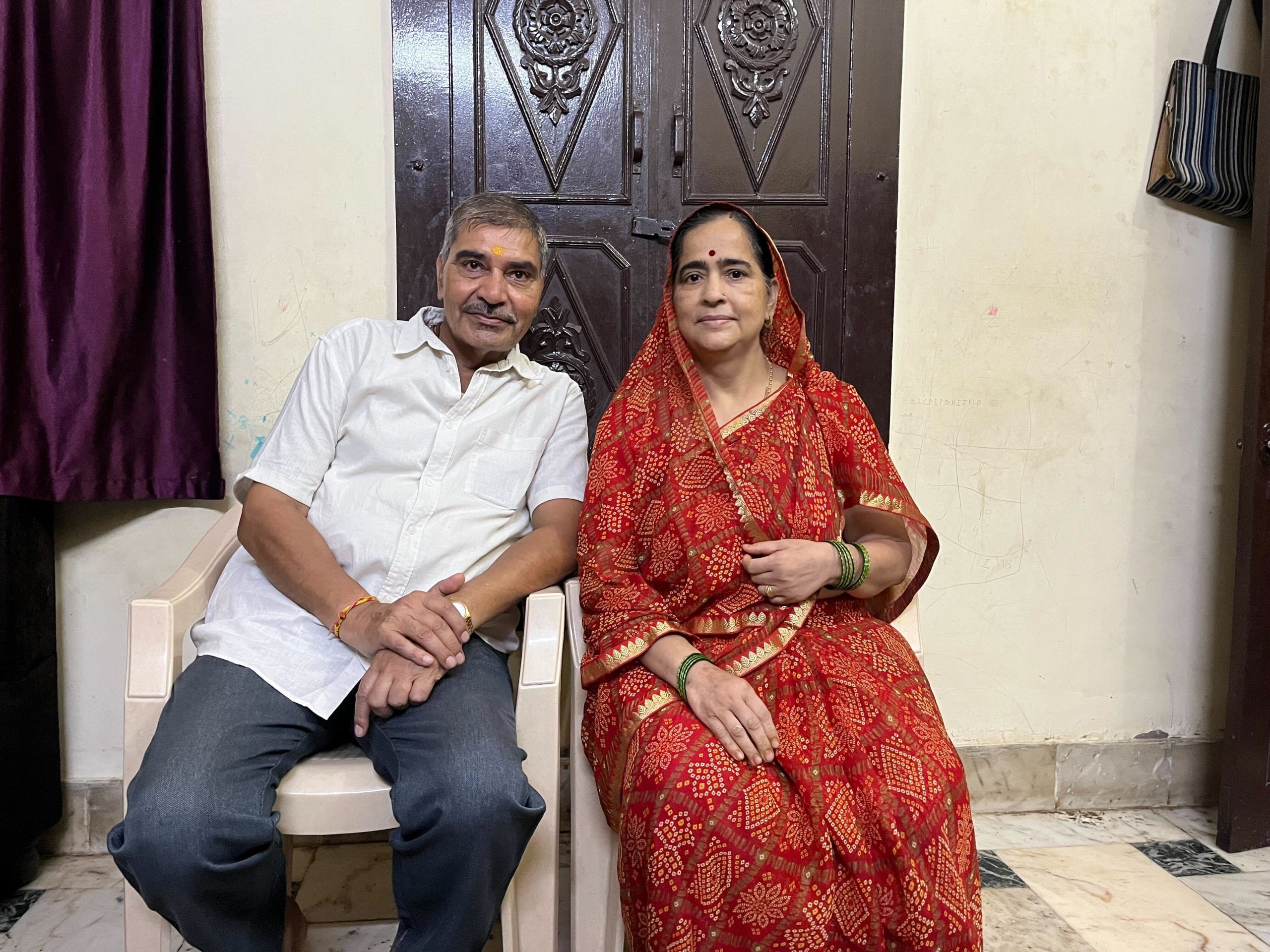
Lalita Devi recalled how Premanand would spend hours at their home telling stories to her children.
“He had very long hair; he looked like Lord Shiva back then. My kids would sit with him as he told the story of how he left his home and became a saint,” she added.
Premanand, too, has a guru — Shri Hit Gaurangi Sharan Ji Maharaj. He would visit his guru regularly and eventually began holding small sabhas in Vrindavan. What started as a small gathering grew into a cult-like following.
Today, hundreds have joined him in Vrindavan — engineers, businessmen, and professors who left their previous lives to become sanyasis. Many of them now form part of his core team.
Also read: A DDA flat baithak brings intimacy back to Indian classical music. Beyond scale, spectacle
His disciples
A few months ago, former WWE wrestler Rinku Singh Rajput reached out to Premanand Maharaj, met him — and rebooted his life.
Singh gave up property worth crores and has since joined Premanand at his ashram. He is now seen in a dhoti, with chandan on his forehead, and sporting long hair and a beard, said a sevadar at Premanand’s ashram.
Rinku from Holpur village in Uttar Pradesh made a name for himself by participating in javelin competitions before winning a baseball throwing contest on the Indian reality TV show The Million Dollar Arm in 2007. He later went to the US where he joined the Pittsburgh Pirates, becoming the first Indian to play professional baseball. In 2018, he joined the WWE circuit under the name Veer Mahaan.
Rudraksha beads, a trishul mark on the forehead, and tattoos reading ‘Ram’ on his arm and ‘Maa’ on his chest were his trademark looks.
According to the sevadar, in December 2024, Rinku decided to follow Premanand during a visit to the Banke Bihari Temple in Vrindavan.
There’s a video of a visibly moved Rinku Singh telling the godman, “I want to attain God-realisation”, to which Premanand gently responded, “That is the essence of life. You can walk that path; I can support you in body, mind, and word.”
Just like Rinku, there are several people who left their career and joined Premanand Maharaj.
Naval Nagri Baba from Pathankot, who reads the questions in the sabha, served in the Indian Army from 2008 to 2017. He came to Vrindavan in 2016 and attended Premanand’s satsang. There was no looking back for him.
“That encounter prompted him to leave the Army in 2017 and embrace ascetic life as a devoted disciple,” said a person, associated with Premanand’s seva for the last few years, on the condition of anonymity.
Also read: Indian cities are a mess of overhead wires. Delhi will pay Rs 8 cr to clear just 5 km
Reels, reach, and reverence
Premanand’s spiritual fame is a recent phenomenon. He began gaining popularity in 2024 through social media, which surged in early 2025 with his viral remarks about marriage, the LGBTQ+ community, and infertility.
Today, he has over 30 million Instagram followers and more than 14 million subscribers on YouTube. His short pravachan clips regularly go viral.
The patronage of celebrities like cricketer Virat Kohli and actors Anushka Sharma and Shilpa Shetty also contributed to his popularity.
Actor Ashutosh Rana visited Premanand in February and had a conversation with him about spirituality.
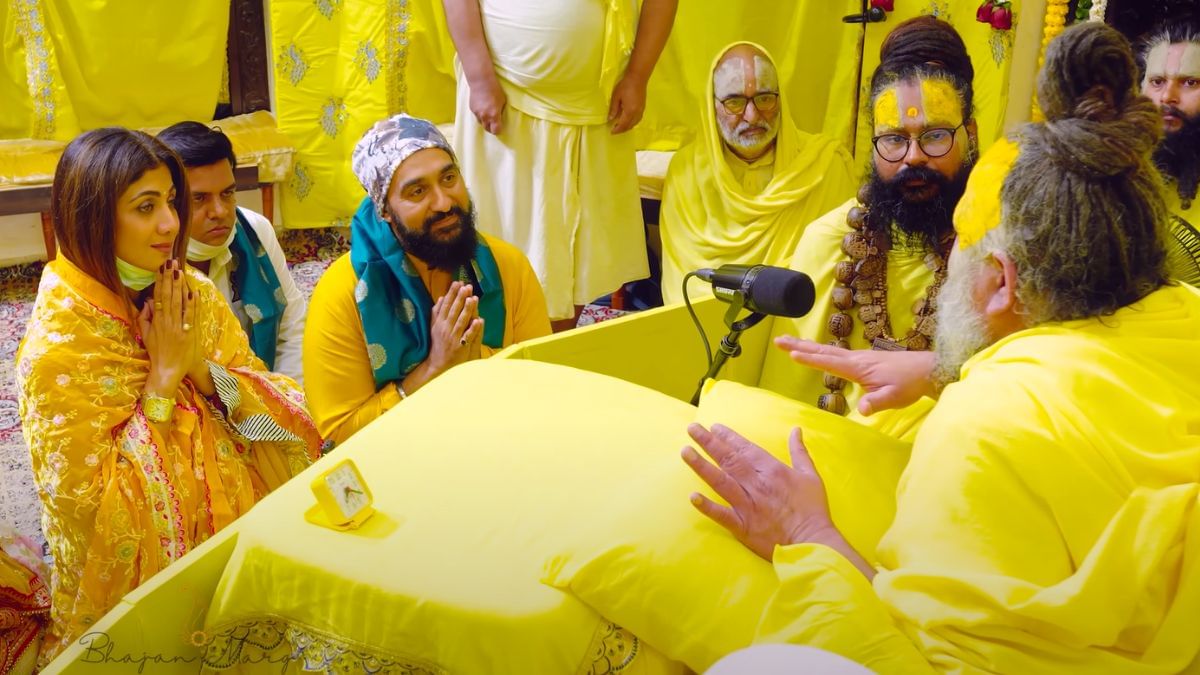
When Shilpa Shetty’s husband Raj Kundra heard that the godman needed dialysis, he offered to donate one of his kidneys to him — “If I can help, one of my kidneys is yours”.
In June 2025, Premanand’s growing clout was on full display when more than 8 lakh devotees gathered for his darshan on Nirjala Ekadashi, prompting authorities to postpone a planned procession due to the overwhelming crowd.
Premanand became popular among the younger generation for his thoughts about marriage, stress management, and relationship management. A few months ago, a man asked if it is okay to approve of his son’s love marriage.
To this, Premanand answered that the parents should support their children.
“Try to convince them if they are wrong. But smartness is to give them blessings. The parents should support their children in this matter”.
Maharaj ji and business
Every morning hundreds of devotees line the streets of Vrindavan to see the godman as he walks from his residence to the Keli Kunj ashram, flanked by attendants fanning him. As people line up to shower him with flower petals, police maintain order in the neighbourhood.
Outside the ashram, vendors display their wares. Among the idols and photos of gods, incense sticks, jaap counters, vermillion, and small bottles of herbal oils, are pictures of Premanand.
Brightly coloured laminated photographs and posters of the godman dressed in yellow robes, with garlands around his neck and hands raised in blessing, sell for Rs 150-300.
In Vrindavan’s bustling lanes, Premanand Maharaj now shares shelf space with Lord Krishna. Shops once selling only idols, tulsi malas, and clothes for the deity, now prominently display his framed photographs, posters, and jaap counters.
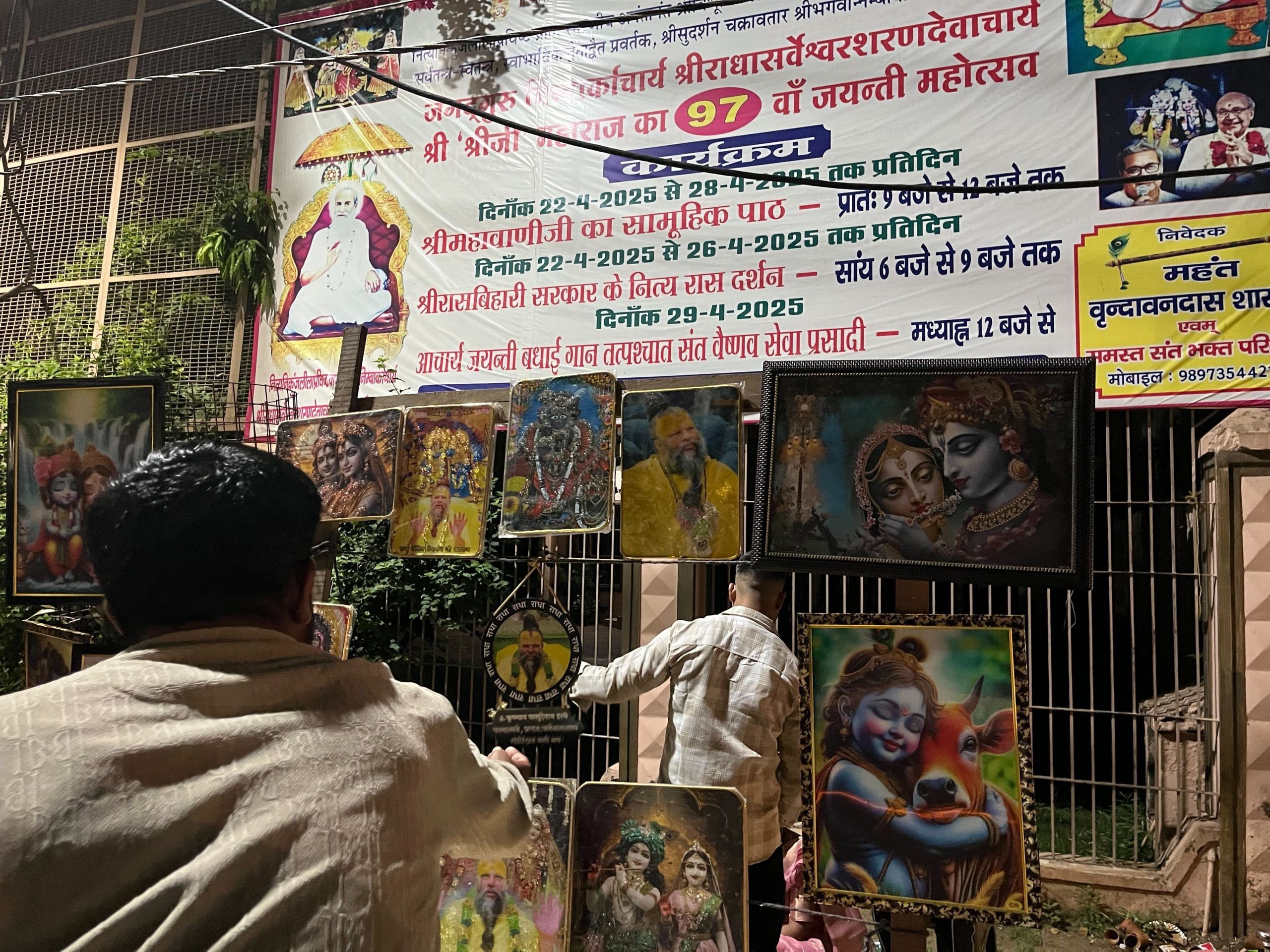
‘Premanand Ji Maharaj Spiritual Decoration MDF Wooden Wall Hanging Decor for Living Room,’ read the description of one such item. Other products include idols, chanting devices with his recorded voice, T-shirts with his image, and lockets.
And canny vendors are quick to jump on the trend.
“Earlier, I sold only Krishna’s clothes and malas, but the demand for Maharaj ji’s photos has shot up,” said Monu Sharma, a stall owner.
“Hundreds come daily — many buy, some just look. I think I’ll stick to this business for years.”
(Edited by Aamaan Alam Khan)


